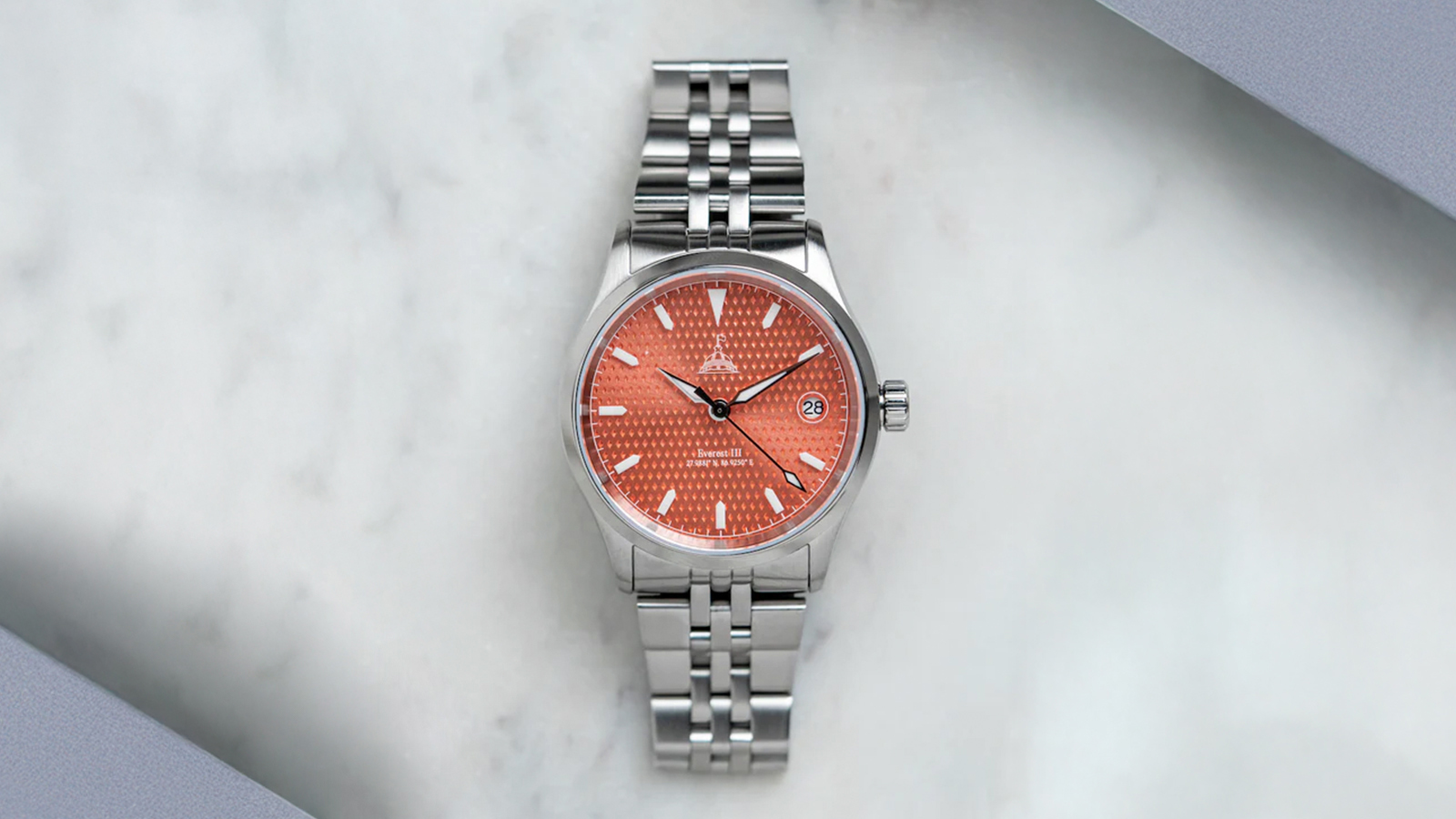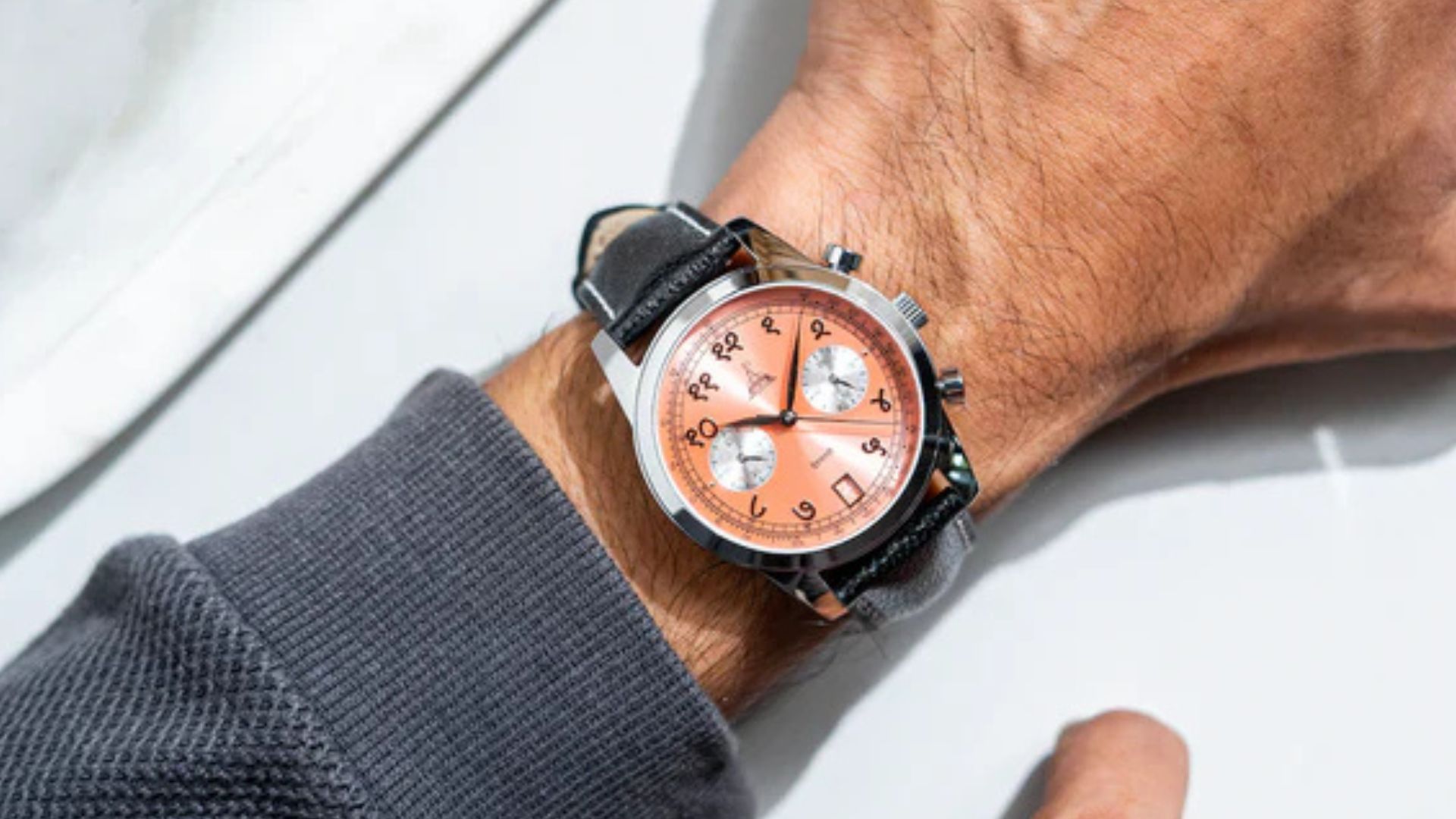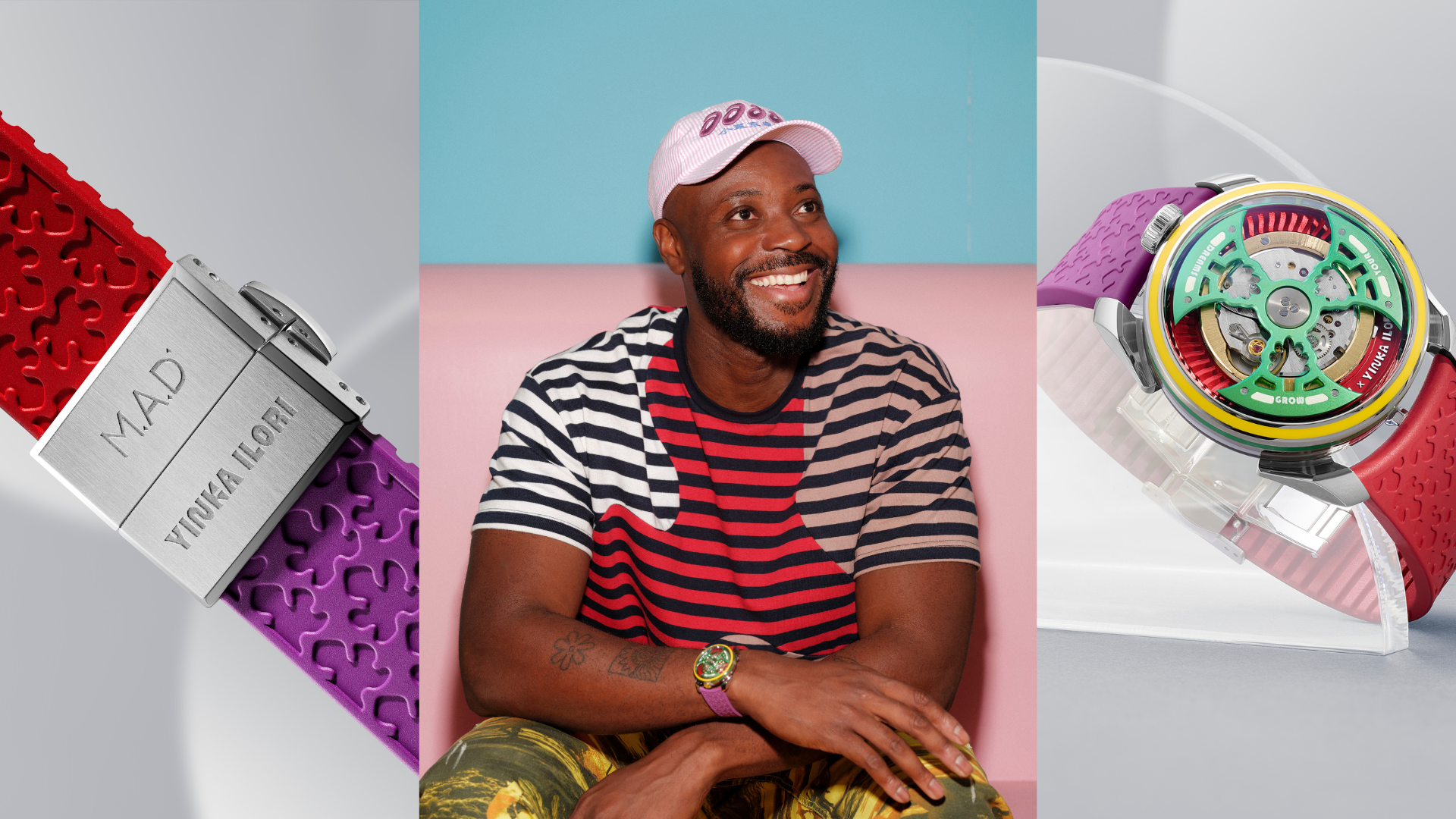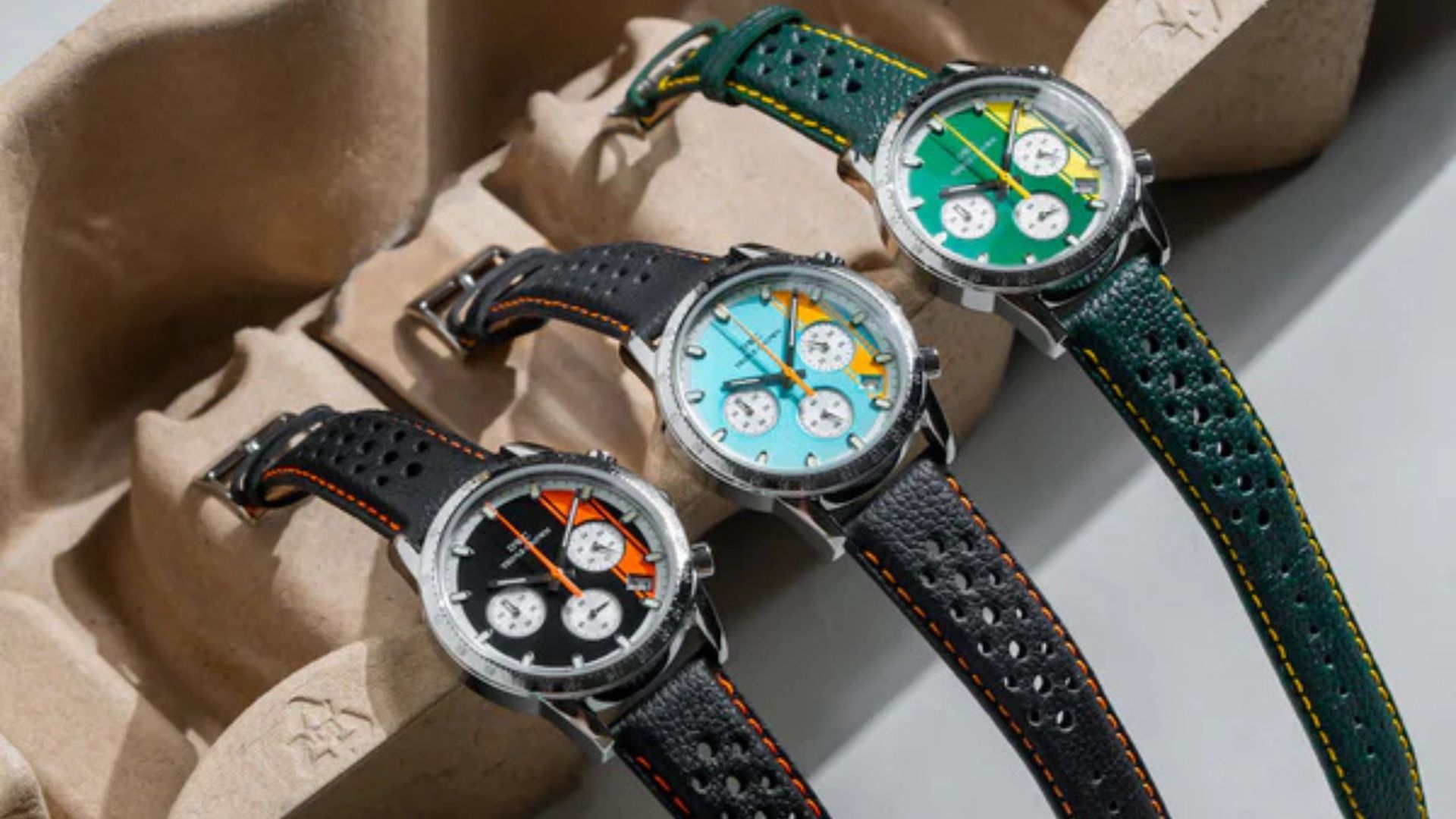Vintage Throwback: Tracing the Incredible Journey of the Rolex GMT-Master


When we talk about a timepiece that tracks time across numerous locations, the Rolex GMT-Master definitely dominates the conversation. Recognisable for its distinctive blue-and-red bezel, this watch was initially created as a specialised tool for pilots. It has since outgrown the utilitarian function and become synonymous with a well-travelled life.
As part of its latest offerings, Rolex unveiled two iterations of the Oyster Perpetual GMT-Master II at Watches and Wonders 2023. The first one, a Rolesor variant, is a blend of yellow gold and trusty Oystersteel while the second one flaunts a full 18 ct yellow gold ensemble. The words, ‘GMT-Master II’, elegantly appear in powdered yellow on each dial.

To be sure, the GMT-Master has come a long way with numerous variations and functions over the years, including the ‘II’ in its name. Let's now take a deep dive into its fascinating history.
The Very First Rolex GMT-Master
In 1954, Rolex embarked on an aviation horology journey with the introduction of the reference 6542, known as the Rolex GMT-Master. This iconic timepiece had its roots in Rolex sports watches, such as the 1937 Rolex Zerographe. However, it was the 1953 Submariner along with the Turn-O-Graph that paved the way for the first GMT-Master. These early pioneers featured rotating aluminium bezels, enabling users to track elapsed minutes and laying the foundation for the GMT-Master that we cherish today.
Among those captivated by the GMT-Master's potential was the Pan American Airways, which approached Rolex with a request to create a watch specifically tailored to their unique requirements. Housed in a classic 38 mm steel Oyster case, this timepiece became a pioneer among Rolex's sports watches. It boasted two significant innovations: the cyclops magnifying lens over the date window and a dual time zone complication, enabling wearers to effortlessly track GMT and home time together.

The GMT-Master's iconic presence extended to the silver screen as well, notably when it graced the wrist of Honor Blackman's unforgettable character, Pussy Galore, in the James Bond film, Goldfinger. This further cemented the GMT-Master's reputation.

The commercially available GMT-Master models utilised the modified caliber 1030 movement, later designated as caliber 1065, known for its chronometer rating. This precise and reliable movement featured four hands and a date function. The GMT-Master's bi-directional rotating bezel facilitated effortless time zone adjustments.
Collectors affectionately described the red-and-blue bezel as the ‘Pepsi’ bezel, reminiscent of the famous cola brand. The blue half indicated night hours (18:00-06:00) while the red half represented day hours (06:00-18:00).
The Evolution of the Rolex GMT-Master: From Ref. 1675 to Ref. 16710
After its initial success, Rolex put forth the GMT-Master Ref. 1675 in 1959. This beauty stuck around till about 1980 and rocked an aluminium insert as standard. The steel version had a 'Pepsi' bezel while the yellow gold one had a brown insert. Reaching the groovy 70s, Rolex amped up the GMT-Master family with two additions. First, they introduced a steel and yellow gold two-tone GMT-Master (Ref. 1675/3) in two variations. One had a brown dial with a half-brown, half-gold bezel insert while the other was presented with a black dial and an all-black insert. The choice of the bracelet was either a Jubilee or an Oyster two-tone.
In fact, the Rolex GMT-Master Ref. 1675, formerly owned by Academy Award winner Marlon Brando, was featured in Phillips' New York watch auction, Game Changers, in 2019. This watch had been worn by Brando in Francis Ford Coppola's Apocalypse Now, which was released in August 1979. The watch, known for its exceptional provenance, had captivated millions as it graced the wrist of Colonel Walter E. Kurtz, the character portrayed by Brando. It was believed to be ‘lost’ for a long time. Apart from its prominent role on the silver screen, the GMT-Master showcased at Phillips had an additional element that made it truly remarkable — an engraving on the caseback, hand-engraved by Marlon Brando himself, bearing the inscription, ‘M. Brando’. He kept this timepiece until 1995 when he presented it as a gift to his daughter, Petra Brando Fischer.

Credit: Mary Ellen Mark.
During the late 1970s and 1980s, Rolex underwent a significant transformation, adding sapphire crystals, luminous-filled white gold hour markers, and quick-set date functions to their watches. In 1979, Rolex introduced the GMT-Master reference 16750, and a few years later, in 1983, they replaced the matte dial with the glossy one in the GMT-Master II reference 16760. This updated model featured an independently set 24-hour hand, tracking three time zones. However, due to its thicker movement, the watch had a bulkier case, earning it the nickname, 'Fat Lady', among collectors.
In 1989, Rolex continued to enhance the GMT-Master II line with the reference 16710, which boasted the new caliber, 3185, and a slimmer profile. This model enjoyed continued success until 2007.
Rolex GMT-Master at the Turn of the Millennium
In 2005, Rolex shook things up with the release of the GMT-Master II reference 116718. This new model broke away from tradition, sporting a redesigned case with strong lugs and crown guards. Gone were the old aluminium bezel inserts; these were replaced by sleek black ceramic inserts with gold numerals. Two versions were available: one with a black dial and another with a green dial. The black dial version featured a vibrant green 24-hour hand and ‘GMT MASTER II’ text while the green dial had the text in elegant gold, accompanied by a matching gold 24-hour hand. Powering these watches was the reliable caliber 3186, which had already proved its credentials in the previous models.
After the success of the gold GMT-Master II, Rolex swiftly introduced the two-tone 116713 in 2006 and the steel version, 116710, in 2007, both featuring black dials with the distinctive green 24-hour hand and the ‘GMT-MASTER II’ text. The development of the ceramic bezel, known as Cerachrom, a fusion of ‘ceramic’ and ‘chroma’ (which in Greek means colour), was a significant breakthrough for Rolex. This durable material resists scratches and UV light, addressing the issue of fading that their previous aluminium inserts had faced.
In 2012, Rolex wowed the world with the steel 116710 BLNR at Baselworld. This timepiece featured a groundbreaking black and blue Cerachrom insert, symbolising nighttime and daylight respectively. Rolex's ingenious creation resulted in a striking two-colour bezel, earning it the nickname, ‘The Batman’, from collectors, who recognised its alluring design and unrivalled innovation.
The Pepsi Cerachrom Bezel
The iconic Pepsi Cerachrom bezel was debuted on the 116719 BLRO, a striking white gold GMT-Master II that seamlessly blended the classic 'Pepsi' bezel heritage with a modern sports watch allure. Enthusiasts worldwide were simply mesmerised when Rolex also introduced the steel 126710BLRO in 2018. Celebrities like Ellen DeGeneres appreciated this exceptional timepiece as part of their personal collections. It has also made memorable appearances on both small and big screens. In NBC's Blacklist, James Spader's character sported a GMT-Master Pepsi with a Jubilee bracelet while Ben Affleck showcased it in Gone Girl. Other Hollywood superstars, such as Keanu Reeves, Dustin Hoffman, and Mel Gibson, have proudly worn the GMT-Master Pepsi in some of their films.
Image Credits: Rolex, Marlon Brando’s Photo (Photo: Mary Ellen Mark via Phillips), Sotheby’s












.jpg)






